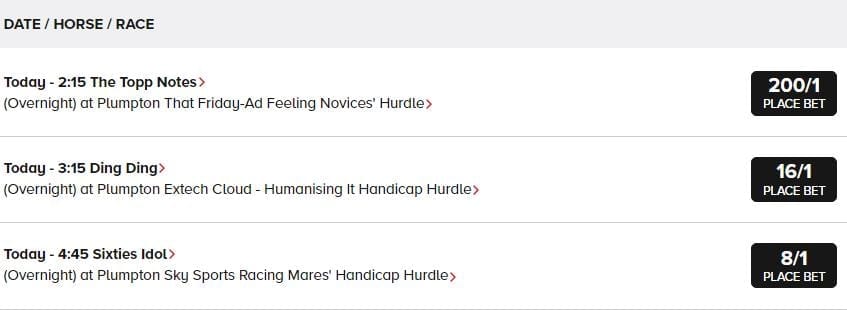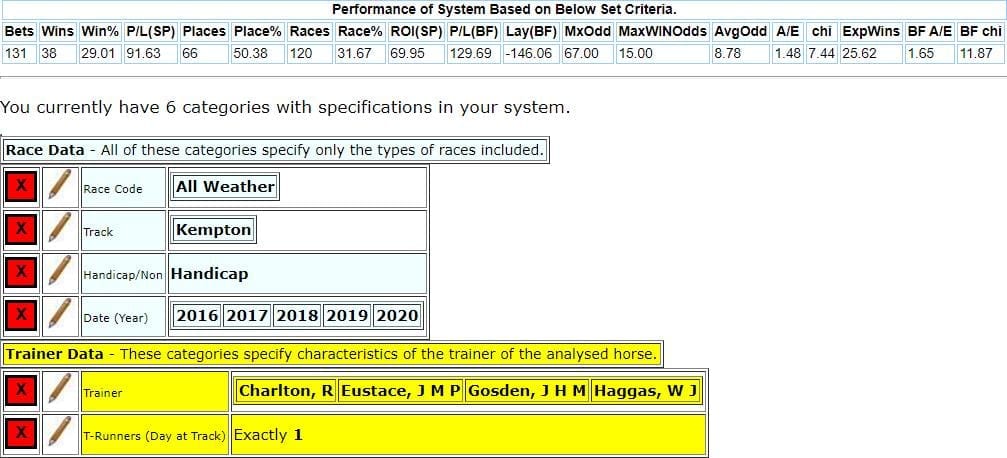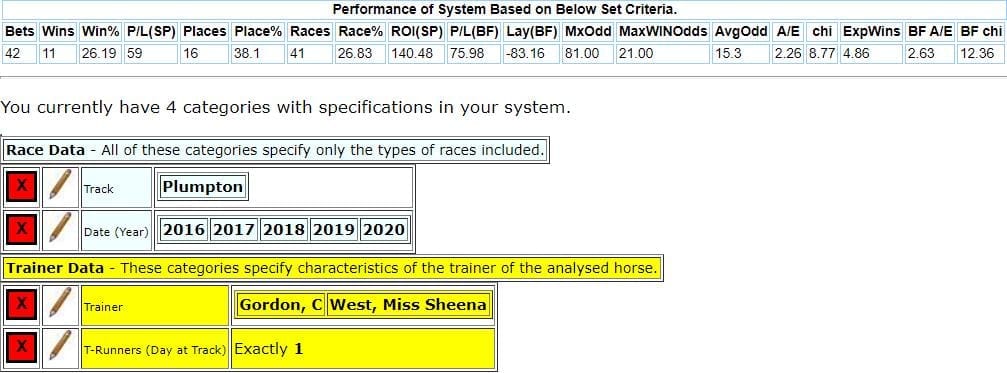Improve Your Punting – Part 6 – Profit from Trainers Having One Runner on the Card
There’s just one fundamental objective for punters and that is to make a consistent profit. To achieve that objective doesn’t necessarily depend on hours of form study or detailed assessment of each horse chance in the race.
The aim of this series on improving your punting is to help punters who don’t have the time or experience to undertake a detailed assessment of each horse chance in the race but still want to make their betting profitable.
Last month, I looked at how you can profit from backing last time out beaten favourites. In this instalment of improving your punting, I’m looking at trainers who have just one runner on the card at a meeting. The purpose of this article is to see how punters can take advantage of it, to facilitate an improvement in their betting and of course their profits.
But’s let’s first begin by taking a quick look at some of the costs of training & owning a racehorse.
The Economics of Training & Owning Racehorses
It costs a lot of money to keep a racehorse in training. After all it’s not been called the “Sport of Kings” for nothing.
The Racehorse Owners Association (ROA) carried out a survey in 2015 which revealed that the annual costs of keeping a racehorse in training were £22,595 on the flat and £16,325 over jumps.
As Bruce Millington pointed out recently in the Racing Post:
“Training fees vary significantly, with Tim Vaughan, one of the aforementioned calm ones, charging £37.50 a day and Mark Johnston, very much not one of the aforementioned calm ones, setting you back £78 a day, although, unlike Vaughan, your vet bills are included”.
For the racehorse owner there are training fees, vet fees, farrier fees. There may even be gallop fees at the likes of Newmarket & Lambourn. Then there’s the important matter of race entry fees which can be anything from £20 to £1,000’s for races of particularly high value.
There are also jockey fees, transport costs to get the horse to a racecourse and there’s also routine veterinary treatment or farriery on course: such as a post-race scope, replacing lost shoes etc.
Whatever way you cut it. Owning a racehorse is a very expensive business.
It’s also an expensive business to train a thoroughbred. Trainers have three main costs: staff, which is of course the biggest of the lot; then there are weekly outgoings such as feed, bedding and medication, etc. and fixed overheads such as bills, rent or mortgage repayments.
Outside the ‘mega’ trainers those with 200+ horses most trainers don’t make money from the training fees they charge their owners but from winning prize money or more likely landing a few good bets during a season.
The One-Track Trainer Method
One thing that has always fascinated me about a trainer’s method of operation is why they would go to the trouble and expense of sending just one runner to the track given the costs I have highlighted.
I remember from my early trips to the local bookies. Looking at the Sporting Life/Racing Post form plastered on the walls of the shop and some old lad whispering to me that Trainer A was sending just one up from Devon to Carlisle and that it must have a great chance as the trainer had sent one horse all that way. The horse did win at 5/1, so the old lad’s thought process was vindicated
Surely then, if a trainer is sending just one horse to the course. We should be taking note, or should we?
Would a trainer send a horse on its own, possibly hundreds of miles from its stable, just for a day out?
Well they could do and there a few examples as to why this would occur.
For example: A Yorkshire based trainer could send a horse to run at say Windsor because the owner(s) are southern based and want to see their horse run. Or, the owners may want to have a runner in one of the big races.
The above cases are a minority though and in the main trainers send one course to track for a reason. Our job, of course, and this is the hard bit, is to find what the reason is.
Identifying the Right Trainers
Firstly, though you must identify the right trainers. A very simple way to do that is to look at a trainer’s record at a course.
You can go to the Racing Post website look at the track in question. At the time of writing this article racing is taking place at Plumpton.
Here’s a screenshot from the Racing Post for Plumpton and the top five trainers over the last five seasons:

Gary Moore has had the most winners in the period, but you would have lost £97.89 to a £1 level stake, so I would avoid him, The two trainers I would focus on are Chris Gordon & Sheena West who both have been profitable at Plumpton over the last five seasons.
Looking at the trainer’s entries for the day:
Chris Gordon has two runners at Plumpton.

And Sheena West has three runners on the card

There wouldn’t be any selections at Plumpton, so you would move onto the next meeting and so on until you find one of the leading and even more importantly profitable trainers at a particular course.
A Simple Method
Say Sheena West had just one runner at Plumpton and it was between 5/1 & 10/1 in the Racing Post betting forecast, you could simply back it each way.
The simple logic is that you have a profitable trainer at the track, which has just one runner on the card that day and it’s reasonably well fancied in the betting.
A simple and quick methodology that will get you winners but it’s too blunt and probably won’t make you a profit long term. Mind you I haven’t tried it so I can’t really say for sure. Maybe you could paper trade it, to see if it does.
You Must Dig Deeper
As ever to find the real profit we have to dig deeper. Now backing a horse purely because it’s a trainer’s only runner on the card that day is committing the punting equivalent of ’hara- kiri’.
You must dig deeper to find out what type of horse the trainer does well with at particular course:
- A trainer may do better with their handicappers, rather than maidens/novices;
- Maybe they do well with a certain age group or have a good record with 2-year-old newcomers;
- They do well when they book a certain jockey;
- They do better when their runner is in the first three in the betting forecast;
- Maybe they excel with runners in a certain class at the track.
This is where a database like www.horseracebase.com comes into its own. You can interrogate the data further to find this kind of information.
For the purpose of this exercise, given the amount of racing held each year, I’m going to use Kempton all-weather track.
The results below are from the start of 2016.
Kempton
Handicaps/non-handicaps
Using the useful dig feature on horseracebase. Here are the top trainers at the track in handicap/non handicap races when having just one runner on the card.

The first thing we can see there are some top yards whose sole runners on the Kempton card should be noted.
Granted not many qualifier but Roger Charlton John Gosden, William Haggas and James Eustace’s handicap qualifiers are worth backing.

Those four trainers combined have made a profit for the last four years and I’m sure they will continue to do in 2020.
Roger Varian’s novice runners at Kempton are also worth noting.
System 5: Back Roger Charlton, James Eustace, John Gosden and William Haggas handicap runners when they have just one runner on the card at Kempton
System 6: Back Roger Varian runners in novice races when he has just one runner on the card at Kempton
You can of course do the same interrogation for each racecourse in Britain & Ireland.
Finally, out of interest I used the database to see how Sheena West & Chris Gordon fared when having only one runner on the card at Plumpton.

They performed rather well with a level stakes profits to SP and a rather cool +75.98 to Betfair SP.
Conclusion:
You can make a profit from trainers sending one runner to the track but does require a small level of work to do so. If you see John Gosden has only one runner on the card at Kempton and that runner is in a handicap race, then you can back those runners blind and make a profit.
Likewise notice Roger Varian with one runner in a novice race at the same track and you can cash in without taking into consideration any other factors.
John
Featured Image by Gerd Altmann from Pixabay


